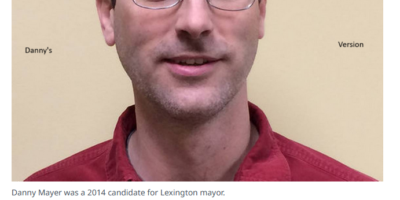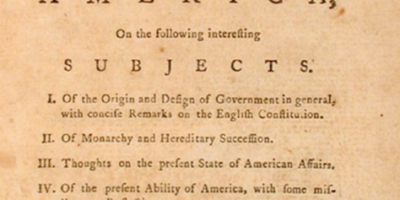By Keith Halladay
For months after moving to and subsequently driving in Lexington, after residing for several years in Boston, Mass., I noticed the number of traffic accidents in the area of Fayette County seemed out of proportion to the area’s size, density, and relaxed pace. I’d just come from a city infamous for aggressive drivers–highway speeds in the 85-90-mph range, inveterate tailgating, and general bellicosity–but the rate at which Boston drivers actually collided, either with each other or with the roadside infrastructure, appeared to be far less than what was happening here in the Bluegrass.
The seemingly inexhaustible string of crosses decorating the trees and pasture fences bordering the main roads in Fayette and the surrounding counties heightened my impression that local drivers weren’t often in full command of their vehicles. When a friend moved to Wilmore a few years ago, for example, I began driving U.S. 68 quite a lot, and on the old road there are stretches where from every other corner or rise a white-painted cross or bunch of plastic flowers sprouts, usually smack in front of a thick oak.
One ought to feel badly when you see these things, ought to consider the frailty of life, have a moment of sympathy for the victim or victims, and operate one’s own vehicle just a bit more carefully and courteously, for at least a few hours. We know that’s the right way to feel and act.
But sometimes it’s difficult; more and more it seems that my self-preservation instinct outmuscles any sympathy I can muster. It wasn’t always this way. There was a time when I did feel the loss just as deeply as any uninvested party possibly could, until one day I realized something that inverted my thinking about all those roadside memorials: I’m invested. We’re all invested. Because each cross or bouquet means one less deadly driver out there to accidentally kill us.
To be clear: nothing written here is meant to demean those countless drivers, passengers, and pedestrians who died due to circumstances beyond their control—swerving to avoid an animal, skidding on unseen ice, losing control after a blowout, or some other miserable, trivial reason. If you lost a loved one that way, please hold your scorn: this does not apply to you. But do real, unavoidable, act-of-God accidents happen that often?
Because it seems to me that most of the time somebody was probably doing something stupid. Either the driver was drinking, driving too fast, racing or otherwise showing off, tailgating, texting, or—maybe the dumbest driver on any road, anywhere—motorcycling without a helmet. And it’s hard to feel any sympathy, because the next bastard like that might take us out too. (Maybe not the helmetless riders; they’ll only hurt themselves, and badly. Unless they get wiped out first by a cell-phone yakker who “just didn’t see” the bike.) As someone who makes it a point to obey posted limits, use the blinker, stay back a safe distance, and use the left lane only for passing, it’s unsettling to know that despite all my care there are still so many folks out there with the power to take my life because they thought the rules didn’t apply to them.
And yeah, Kentucky really does have more traffic fatalities than eastern Massachusetts—about twice as many—despite the fearsome reputation of northeastern drivers. Quite a few more than most states, actually. In fact, according to the National Highway Traffic Safety Administration’s Fatality Analysis Reporting System, in 2007 Kentucky had a higher rate, at 1.8 deaths per million vehicle miles traveled, of traffic fatalities than all but seven states: Alabama, Arkansas, Louisiana, Mississippi, Montana, South Carolina, and West Virginia. And 2007 was a good year for Kentucky; the rate was 1.91 in 2006 and 2.08 the year before that. It’d be great if the rate was trending downward, but the annual statistics from 1994 to the present indicate the rate change is probably cyclical; expect a rise in the next couple of years.
Leaving aside Montana’s national-worst rate of 2.45 deaths per million miles (I can only assume that the loose enforcement of speed limits combined with limitless quantities of snow and ice means that some great proportion of all accidents are fatal), we’re left with five Deep South republics and West Virginia, which are of course the names you have to pencil into a top-ten slot on nearly any list of bad things Americans do.
This begs the question: why? Why must Kentucky nestle itself in the nether regions of this particular list? No, we have no motorcycle helmet law for adults, but motorcyclists only account for 12 percent of fatalities, which is around the national mean. Nor is alcohol the culprit: the Commonwealth trails only Utah in the percentage of fatal accidents in which alcohol was not a factor, meaning we’re either a state full of teetotalers (hmm) or exceptionally good at handling our bourbon.
That leaves a few possibilities, the most obvious of which is that Kentuckians are just really lousy drivers. Five minutes on East New Circle confirms this, but the explanation seems inadequate; after all, they’re even lousier in Ohio, and they only kill 1.13 people per million miles. So what’s the difference?
It might be that in the timeless argument about whether Kentucky is a Midwestern state, like Ohio, or a southern state, like Alabama, Arkansas, Louisiana, Mississippi, and South Carolina, the southern side is winning, at least on the highways. Maybe it’s the moonshining legacy, or lingering resentment about the war (just seeing what sticks, folks), or the legacy of Bo and Luke Duke, or some combination of these sorts of vaguely anti-authority movements, but southerners sure do drive it like they stole it. And so we get more white crosses.
Of course, the explanation that jumps right to mind when you mate the words “southern” and “statistics” involves educational achievement. To reiterate, in case you forgot: Kentucky is 42nd in the nation in per-pupil expenditure, 44th in the percentage of its citizens with at least a high school diploma, and 48th in the percentage of citizens with a bachelor’s degree or higher. Which states are worse in most of these measures? Yep: Alabama, Arkansas, Louisiana, and the rest of the crowd. Southerners don’t have much use for book learnin’ either.
Is there a real connection here? I, being a southerner myself, didn’t do all that well in statistics class, so I don’t know how to approach looking for a meaningful correlation between traffic fatalities and either regional pride or educational attainment, but I don’t think it’s a coincidence that the same people who don’t value education very highly don’t seem to rate safe driving either. Education teaches, among other things, respect—for oneself and other, which are excellent qualities on the road, and if Kentucky would demonstrate more interest in educating themselves and their children, maybe we’d be a bit better off all-round.




Leave a Reply